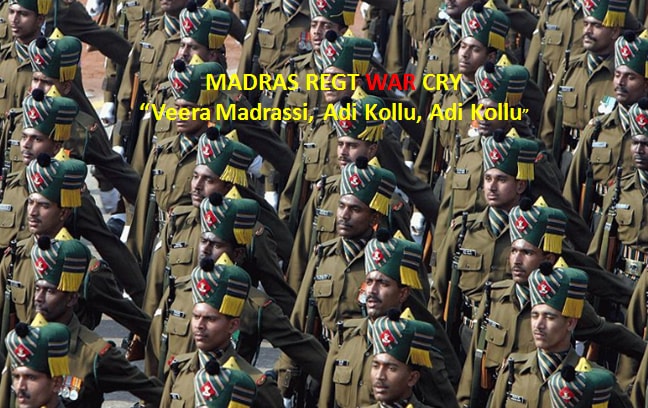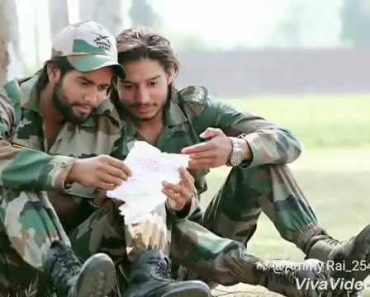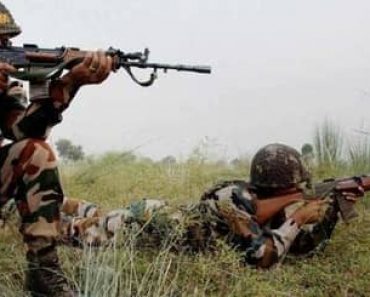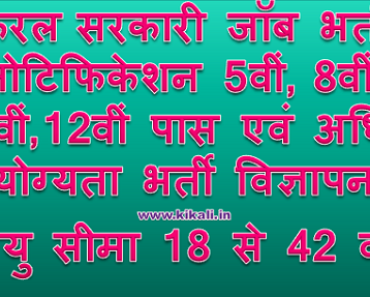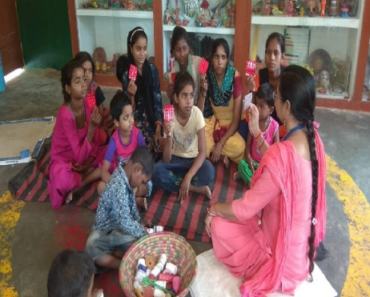The Madras Regiment is the oldest Regiments in the Indian Army and was set up in the former Madras province. It is in existence since the 1750s. The Regiment took part in numerous campaigns with both the British Indian Army and post-independence Indian Army. ‘Goondas’ is the nickname of the second battalion of the Indian Army’s Madras regiment. The second regiment is quite old. It was raised in 1796. A story is also associated with its nickname ‘Goondas’. The story goes way back to 1951 when the soldiers of the battalion helped the famine-affected people of Rajasthan and in procuring food grains that were intended for some other destination. The army headquarters tried to locate the mischief-makers but they were couldn’t. The Governor of Rajasthan was impressed with their deed and gave them the nickname ‘Goondas’. They are also called ‘Thambis’ which means younger brother in the Tamil language.
HISTORY
The Madras Regiment was set up by the former Madras province which was founded in 1639. The Madras Regiment was initially formed as the Madras European Regiment in the early 1660s by the East India Company as the second Company established in India. However, it was formed as a battalion in 1784 under the command of Major Stringer Lawrence who was hired by the East India Company to take charge of the defence of Cuddalore.
The fall of the towns of Madras to the French in 1746, during the time of Robert Clive, necessitated the formation of the Army by The English to safeguard their commercials interests in the coastal areas. Hence, in 1758 Major Stringer Lawrence raised the Madras regiment. On 4th December 1758, the first two battalions of 8 companies each were formed. Battalions serving in the north madras were called ‘Sirkar Battalions’ while the battalions serving in the south-madras were called ‘Carnatic Battalions’. By 1784, the name had reverted to Madras Battalions in respect of all the units. In the years to follow the name changed into Infantry, Native Infantry, Light Infantry and Pioneers.
In a period of 60 years from 1758 to 1838, the regiment was at the peak of its growth. During this period the Madras army won the appreciation of Her Majesty Queen Victoria. The Britishers annexed the Indian subcontinent mainly with the help of the sepoys of the Madras regiment. The coming of British rule and the merging of the Presidency armies led to the reorganisation of the erstwhile regiments. After independence, the infantry battalions of the Travancore “Nair Pattalam”, Mysore and Cochin were amalgamated into the Madras Regiment.
WAR CRY
“Veera Madrassi, Adi Kollu, Adi Kollu” which means Brave Madrassi, Strike and Kill, Strike and Kill!
MOTTO
“Swadharme Nidhanam Shreyaha” which means It is a glory to die doing one’s duty.
INTERESTING FACTS
1. It was Major Stringer Lawrence, a British East India Company officer, who planted the seeds of the Madras Regiment and, thereby, the British Indian Army.
2. The 9th Battalion, formerly known as the Nair Brigade (Nayar Pattalam), is the oldest Battalion in the Madras Regiment. This battalion completed 300 years of service in 2004. They were guards for the Maharajah of Travancore, known as the “Nayar Army”, and joined the Indian Army in April 1951
3. By 1838, the Madras Regiment had grown into a mammoth force of 52 infantry battalions and by November 1835 there were 50 garrisons divided into 9 divisions in the Madras Presidency.
4. Following the re-organisation of the Indian Army in 1903 and till 1914, only three pioneers and eight Carnatic battalions were left.
5. It was the first World War that led to the need of raising 8 additional battalions.
6. The entire 3rd Madras Regiment was disbanded between 1923 and 1928 but before its disbandment, it had had already earned 22 gallantry honours.
7. The Regiment recruits from the five southern states – Tamil Nadu, Kerala, Telangana, Andhra Pradesh and Karnataka.
8. The Madras regiment has played a significant role in United Nations peacekeeping missions.
9. Madras Regiment took active participation in all the wars India has fought since Independence. They also served in India’s highest battlefield i.e. The Siachen.
10. Tamil which is one of the oldest classical languages of the Indian sub-continent is quite popular in the Madras Regiment. In fact, in the Indian Army, no other regiment except for the Madras regiment speaks the Tamil language.
11. Its insignia is the Assaye elephant. This can be seen on the Madras regiment centre (MRC) crest. It is a recognition of the regiment’s victory under Wellesley in the battle against Peshwa’s army in Assaye. Wellesley described this battle as tougher than the Battle of Waterloo. It symbolises the seven qualities of the MRC soldier i.e. strength, confidence, endurance, courage, faithfulness, sagacity and obedience.
12. The martial art of Kalaripayattu is an integral part of MRC training.

